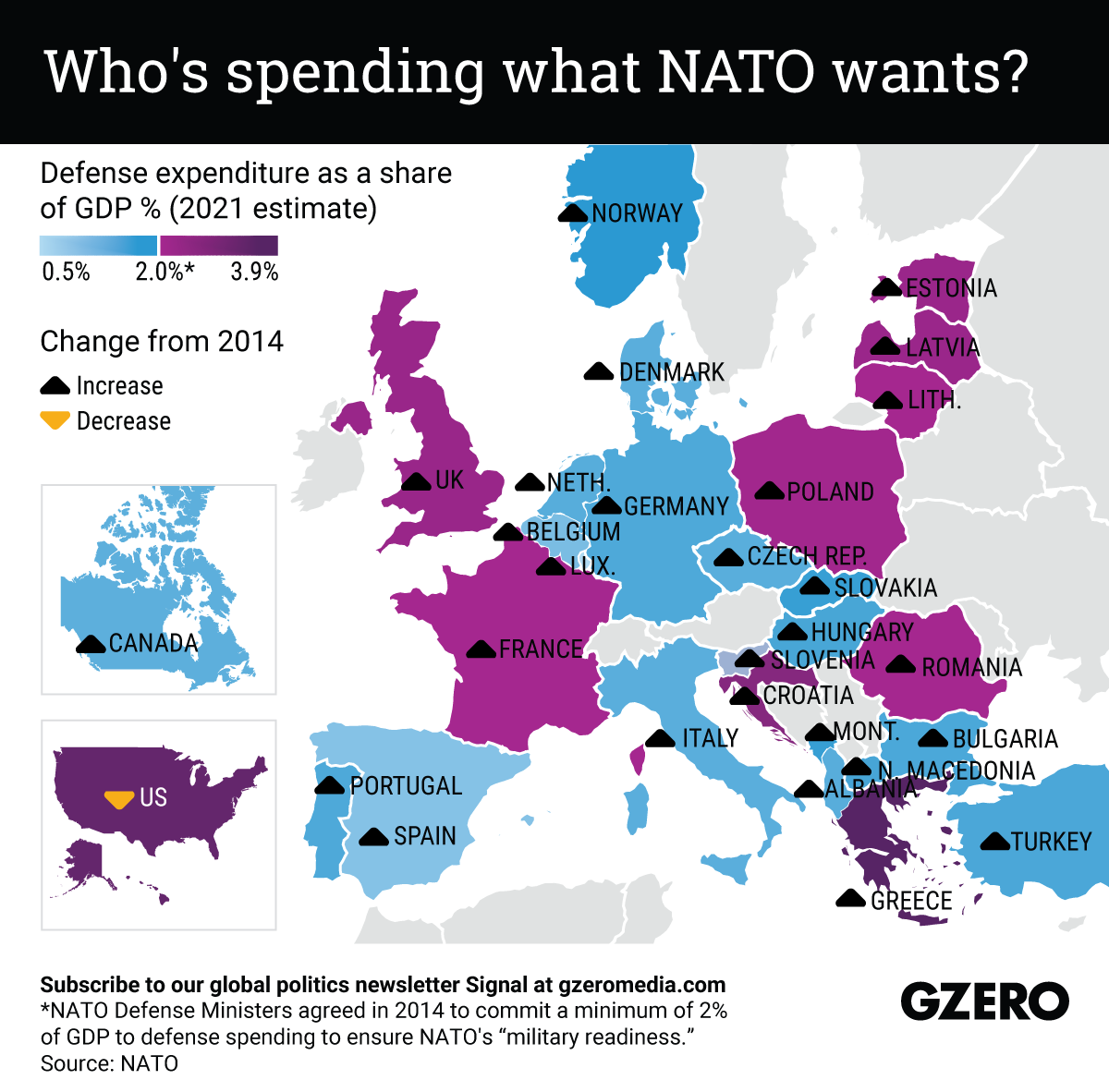June 14, 2021
In 2017, then-US President Trump rallied against NATO, complaining that European member states weren't pulling their weight to bolster the alliance, whose cornerstone is that an attack on one member is considered an attack on all. NATO was formed in the wake of World War II as a counterweight against Soviet dominance in Europe and beyond. But this week, when US President Biden met fellow NATO members in the UK, the emphasis was on how to adapt the alliance to counter China's increasing belligerence. Indeed, disagreements over sharing the cost of maintaining military readiness have caused frictions in recent years, and as a result, the bloc agreed that all member states would spend at least 2 percent of GDP on defense by 2024. So, how are they tracking? Here's a look at who pays what.
From Your Site Articles
More For You
Members of the Uyghurs diaspora gather in front of Alberta Legislature during the protest 'Stand in Support of East Turkistan' to commemorate the 1990 Barin Uprising, on April 6, 2024, in Edmonton, Alberta, Canada. The East Turkestan independence movement seeks the region's independence for the Uyghur people from China. They advocate renaming the region from Xinjiang to East Turkestan, its historical name.
Photo by Artur Widak/NurPhoto
Remember Xinjiang? There was a time, not long ago, when China’s crackdown on the Uyghurs, a Muslim minority group living in Xinjiang province in Northwestern China, was a hot topic. But these days the attention has faded.
Most Popular
Think you know what's going on around the world? Here's your chance to prove it.
Nearly four years into Russia's invasion of Ukraine, the push to end the war is intensifying. The past few weeks produced not one but two proposals.
With widespread AI adoption across sectors, its economic impact is no longer theoretical. It’s measurable. The result? New waves of innovation and a more AI-powered economy. Subscribe to Bank of America Institute for deeper insights on AI’s impact.
© 2025 GZERO Media. All Rights Reserved | A Eurasia Group media company.
